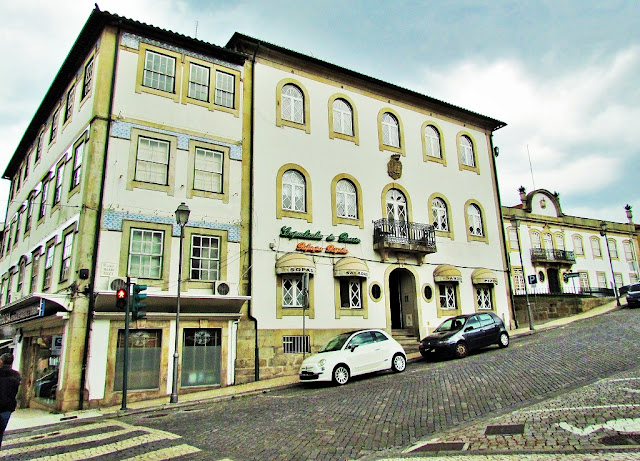VISEU
N 40.65277; W 7.91670
It is the seat of a municipality with an area of 507.10 km² and 99 274 inhabitants (2011), divided into 25 parishes. Viseu is the center of the Intermunicipal Community of Viseu Dão Lafões, composed of 14 municipalities and serving a population of around 270,000 inhabitants. This is limited to the north by the municipality of Castro Daire, to the northeast by Vila Nova de Paiva, to the east by Sátão and Penalva do Castelo, to the southeast by Mangualde and Nelas, to the south by Carregal do Sal, to the southwest by Tondela, to the west by Vouzela and the northwest by São Pedro do Sul.
In 2012, it was considered, once again, the Portuguese city with the best quality of life.
Viseu has a central position to the district and the municipality, located in the so-called "Planalto de Viseu".
It is surrounded by a mountainous system, constituted to the north by the mountains of Leomil, Montemuro, and Lapa, to the northwest by the Serra do Arado, to the south and southwest by the Estrela and Lousã mountains, and to the west the mountain that most directly influences this area, the do Caramulo. The municipality is characterized by an irregular surface with altitudes between 400 and 700 m.
Located in a transition zone, the municipality has a set of microclimates. The Serra do Caramulo, located west of the municipality, assumes an important role in climatic terms, by attenuating the influences of the western air masses (although the Mondego valley facilitates their penetration). Thus, the climate of Viseu is characterized by the existence of high thermal amplitudes, with rigorous and humid winters and hot and dry summers.
The largest extension of the municipality is composed of granites, this rock being the main responsible for the formation of the existing soils. To a lesser extent, there are quartzite and gneiss formations of the pre-Cambrian and archaic.
Riodades (São João da Pesqueira);
Santa Comba Dão;
Santar (Nelas);
São João da Pesqueira + Trevões;
São Pedro do Sul;
Santa Comba Dão;
Santar (Nelas);
São João da Pesqueira + Trevões;
São Pedro do Sul;
São Martinho de Mouros (Resende);
São Pedro do Sul - Spa ;
Sátão;
Sernacelhe;
Tabuaço;
Tarouca + Ucanha;
Tondela;
São Pedro do Sul - Spa ;
Sátão;
Sernacelhe;
Tabuaço;
Tarouca + Ucanha;
Tondela;
Várzea - São Pedro do Sul (Spa);
Ventosa (Vouzela);
Vila Nova (Ventosa);
Vila Nova de Paiva;
VISEU;
Vouzela;
Ventosa (Vouzela);
Vila Nova (Ventosa);
Vila Nova de Paiva;
VISEU;
Vouzela;
💓💓💓💓💓
Return to mainland Portugal &
the Azores and Madeira islands



















































































